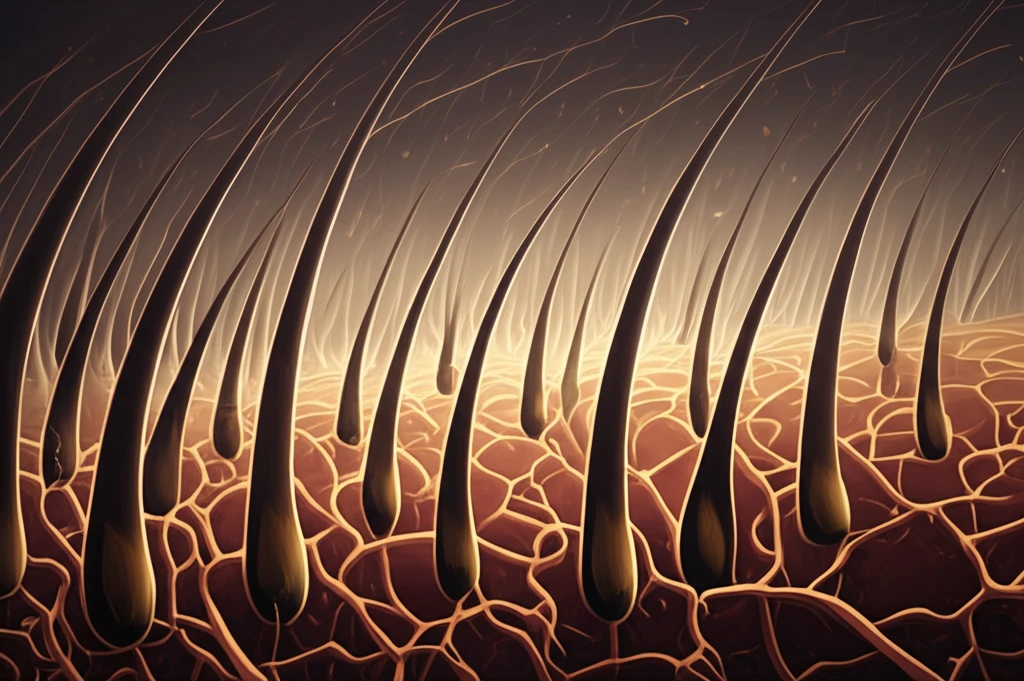
Unlocking the Secrets of Alopecia Areata: How CRBP-1 Could Revolutionize Hair Loss Treatment
"New research suggests that Cellular Retinol-Binding Protein-1 (CRBP-1) plays a crucial role in the severity of alopecia areata, offering hope for more effective treatments."
Alopecia areata (AA), a common cause of hair loss, affects millions worldwide. Characterized by non-scarring hair loss, this condition can significantly impact an individual's self-esteem and quality of life. While the exact cause remains elusive, factors such as genetics, environmental triggers, and psychological stress are believed to play a role.
Recent research has shed light on the intricate relationship between retinoids—compounds related to vitamin A—and hair follicle health. Retinoic acid (RA), a key retinoid, is essential for various cellular functions, including hair growth regulation. Imbalances in RA levels have been implicated in the development of AA, prompting scientists to investigate the role of proteins that manage RA within cells.
One such protein, Cellular Retinol-Binding Protein-1 (CRBP-1), has emerged as a potential player in the pathogenesis of AA. A new study published in the Journal of Cosmetic Dermatology explores the expression of CRBP-1 in lesional skin of individuals with alopecia areata, offering intriguing insights into its involvement in this complex condition.
CRBP-1: A Key Regulator in Hair Follicle Health?

CRBP-1 belongs to a family of proteins responsible for regulating the concentration of retinoic acids within cells. By controlling the interaction between retinoic acids and their nuclear receptors, CRBP-1 influences a wide range of cellular processes, including cell growth, differentiation, and immune responses. Given the importance of RA in hair follicle function, researchers have hypothesized that CRBP-1 may play a critical role in maintaining hair health and preventing hair loss.
- Study Design: Case-control study comparing skin biopsies from alopecia areata patients and healthy controls.
- Methodology: Immunohistochemistry was used to evaluate CRBP-1 expression in skin samples.
- Key Finding: CRBP-1 expression was significantly increased in lesional skin of alopecia areata patients.
- Correlation: A positive correlation was found between CRBP-1 expression and the severity of hair loss (SALT score).
The Future of Alopecia Areata Treatment: Targeting CRBP-1
The discovery of CRBP-1's role in alopecia areata opens new avenues for potential therapies. Future research should focus on further elucidating the mechanisms by which CRBP-1 influences hair follicle function and exploring strategies to modulate its expression or activity. Such strategies could involve developing topical or systemic treatments that target CRBP-1, ultimately leading to more effective and personalized approaches to managing alopecia areata.
